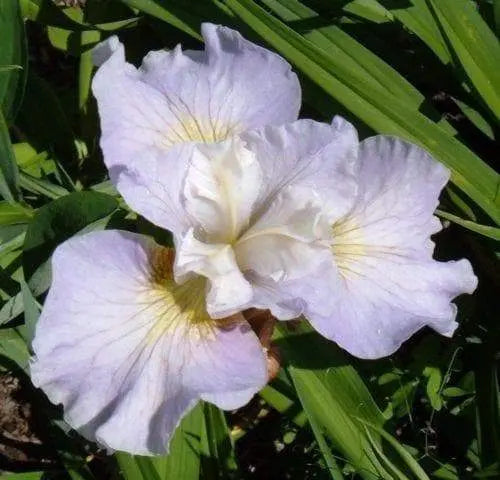
IRIS SIBIRICA 'Dawn Waltz ('3 Plant) Bloom,Early and mid-spring
Original price
$ 19.79
-
Original price
$ 19.79
Original price
$ 19.79
$ 19.79
-
$ 19.79
Current price
$ 19.79
Most orders are processed by the next day
Select your desired size and/or color from the available options.
| Name: | Iris Sibirica Dance Ballerina Dance |
| Flower size: | 12 cm |
| Height: | 80 cm |
| Season: | Early |
| Ploidy: | Diploid |
| Definition: | Light purple, near white arms and yellow-red throat |
-
Planting
- Dig holes or beds wide, not deep
- Lightly amend heavy clay or sandy soils with organic matter
- Gently remove plants from containers, keeping the root ball intact
- Loosen potting soil and roots around bottom and edges of root ball
- Plant level with surrounding soil, spreading roots outward
- Fill around roots with lightly amended native soil
- Water to settle soil around roots
- Cover the area with leaf or bark mulch 1 - 3 inches thick but not piled up onto the plant's stem/trunk
- Water deeply
-
Watering
- Fast-growing herbaceous plants require more attention to watering than woody plants
- When possible, water in the morning to avoid promoting diseases from night watering
- Water slowly and deeply when plants begin to wilt and do not perk up at night
- Watering twice, a few minutes apart, helps water soak in deeper
- Soaker hoses and trickle or "drip" irrigation are very efficient and water-conservative
- Never overwater, or you may cause root problems
- Mulches help reduce water evaporation in hot or dry weather
- In dry climates, form a soil "ring" around plants to hold water longer
-
Pruning
- Tall or leggy plants may be cut or pinched back to stimulate strong new growth
- Cut or pinch stems of flowering or foliage plants just above leaves or old leaf joints
- Thin excess growth so remaining growth will be more vigorous
- "Deadhead" - remove faded flowers or seedheads to stimulate new flowering growth
- Remove dead, faded, or diseased foliage as needed
- Remove some foliage during transplanting to reduce stress on new roots
- Clean up plants at the end of the season to reduce pest or disease buildup and to keep the area neat
- Avoid putting diseased plant parts in the compost, or risk spreading diseases later
-
Propagation
- Divide clump-forming perennials such as hosta, daylily, iris, sedum, phlox, and most ornamental grasses in the late fall or late winter into individual plants, each with a piece of stem, crown (body), and roots
- Sow seed of perennials such as coneflowers, coreopsis, and others in the late summer or late spring, keeping them moist and giving them enough time to sprout and grow roots before extreme cold or hot weather
- Some perennials, including sedum and phlox, root readily from stem cuttings taken in summer
- Keep newly-propagated perennials moist, not wet, and cover the soil underneath with mulch to protect roots from weather extremes and to reduce competition from weeds
-
Fertilization
Most plants need a regular "diet" of all-purpose plant food, either specialty (labeled for your specific plant type) or a generic N-P-K (nitrogen - phosphorus - potassium)
Fertilize early in the plant's growing cycle - spring for summer plants, fall for winter plants
- For leafy plants, use a fertilizer with a higher nitrogen content (first number)
- For flowering or fruiting plants, use a fertilizer higher in phosphorous content (middle number)
If using a water soluble fertilizer:
- Mix as directed on container according to directions
- Wet the leaves and drench soil
- Repeat
If using a granulated fertilizer:
- Scatter a small amount of all-purpose fertilizer lightly under plants from the stem to beyond the outer spread of branches or foliage
- Water slowly and deeply
NOTE: Never over fertilize! You will see lots of weak, leafy growth and few flowers
LET OUR CUSTOMER SPEAK FOR US

![[Seeds] - Caribbeangardenseed](http://caribbeangardenseed.com/cdn/shop/files/gift-card-gift-card-1_1024x1024_dfa857db-9150-4315-a362-7f0bb3fb9c47_60x28.png?v=1703978838)

